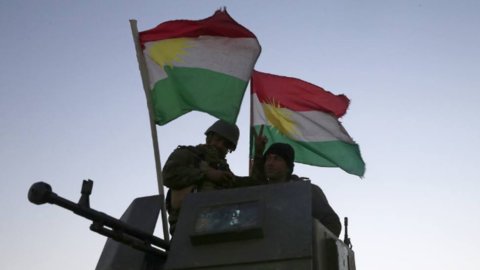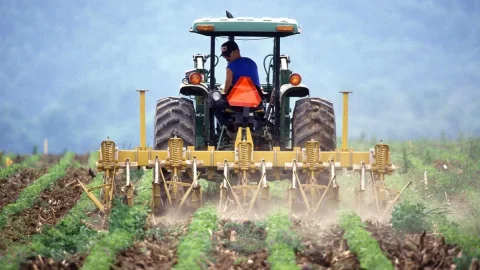The 2018 edition of the Risk Map of Aon - the first group in Italy and in the world in risk and human resources consultancy - which analyzes political risks, terrorism, and episodes of violence linked to political events, was created in collaboration with Continuum Economics and The Risk Advisory Group.
Andrea Parisi, Chief Executive Officer and General Manager of Aon SpApresented as follows: "Now in its twenty-first edition, the Aon Risk Map represents an important analysis tool for Italian companies with interests in emerging markets or those entering these markets for the first time, providing an overview of the levels of political risk , political violence and terrorism in over 160 countries. In the current international context, an integrated risk management approach is essential, integrating the analysis of commercial risks with that of political risks. Aon is at the forefront of risk assessment and the implementation of risk management processes to protect the businesses of companies that develop beyond national borders”.
Terrorism and political violence
Aon's Terrorism & Political Violence Map highlights how, for the third consecutive year, risk levels related to episodes of political violence are continuously increasing around the world, due to growing geopolitical tensions, a weakening of liberal democrats, and the repercussions of conflicts around the world. There are 17 states that have received an assessment of the risks associated with terrorism and major political violence, while only 6 have been assigned a lower risk level compared to the 2017 edition. In particular, the study shows that:
• 40% of countries are exposed to the risk of terrorism and sabotage;
• 60% at risk of civil unrest;
• 33% at risk of insurrections, coups or wars between states. Furthermore, 46 countries or territories are classified as high risk or very high, representing 22% of the total
The likelihood of wars between states, even involving major powers, has reached its highest level since the end of the Cold War. Growing geopolitical competition and weak leadership in international diplomacy have contributed to maintaining high or increasing risk levels of armed conflict over the past year. Growing rates of convergence on political, economic and social issues in mature democracies, coupled with divisions among Western powers in the face of complex threats and risks, have contributed to diminishing global security and generating greater strategic uncertainty.
Considering that the number of terrorist attacks in Western countries in 2017 (204) almost doubled compared to 2016 (96) and that the total number of victims remained more or less the same (1.092 in 2017), the mortality linked to attacks terrorist attacks has decreased. The study showed that the threat posed by the Islamic State has stopped expanding – although it has not yet begun to decrease. In 2017, the Islamic State launched attacks in 29 countries on five continents, a number equal to that of 2016, and greater than that of 2015, when 19 countries were affected. However, the Islamic State's global reach seems to have now reached its peak, and it seems probable that the number of countries where it is able to strike with direct attacks, or inspire "lone wolves" to do so, is expected to decrease in 2018.
In particular, the tourism sector is having to manage the risks deriving from the increase in terrorism, since this sector represents a strategic target for some terrorist organizations. In 2017, there were at least 35 attacks globally that directly targeted businesses considered a vital part of the travel industry, such as hotels, resorts, nightclubs, airports, train stations and tourist attractions. Attacks that do not directly target tourism-related businesses can still have a substantial indirect impact on industry revenues.
The political risk
Last year, political risk increased in 11 countries, while it decreased in only 2 countries, reflecting the persistence of instability in some emerging markets, highlighted by the growth of episodes of violence and supply chain disruption. In many countries, the risk of supply chain disruption has increased due to both the climate crisis and the weakening of public finances in some countries. Interestingly, Asian countries' trade ties have shifted from the United States to China over the past year. This change is due to China's economic development and its rise as a giant in international trade. In light of this, exports from Asian countries to the USA have dropped from around 23% of total exports in 2000, stabilizing at around 12% in recent years. On the other hand, exports from Asian countries to China have more than doubled over the last decade, reaching 23% of total current exports.
In addition, political risks in Latin America have intensified due to electoral processes in many countries in the region, which have caused delays in the implementation of key reforms in Brazil and increased fear of a possible reversal of reforms implemented in Mexico in recent years . Major countries in the region are at risk of seeing a populist government elected, while several smaller economies are experiencing political turmoil. More generally, the region that has suffered the most downgrades (rating downgrades) is Africa. The ongoing conflicts within the countries, the deterioration of democratic governance and the ever more frequent corruption scandals have led to an increase in episodes of political violence. Groups like the Islamic State and Boko Haram are taking advantage of the fragility of institutions and the permeability of territorial borders. Finally, the instability and violence in the Middle East, which includes some of the highest risk countries in the world, such as Iraq, Syria, Yemen and Egypt, have also spread to neighboring countries, damaging trade and tourism.





